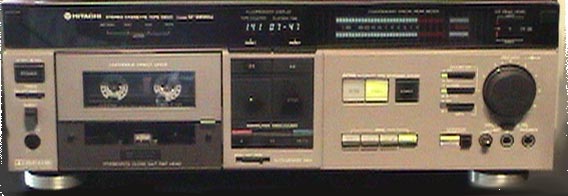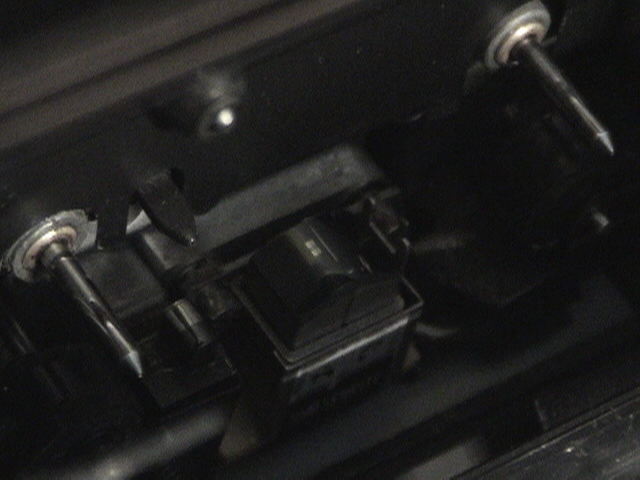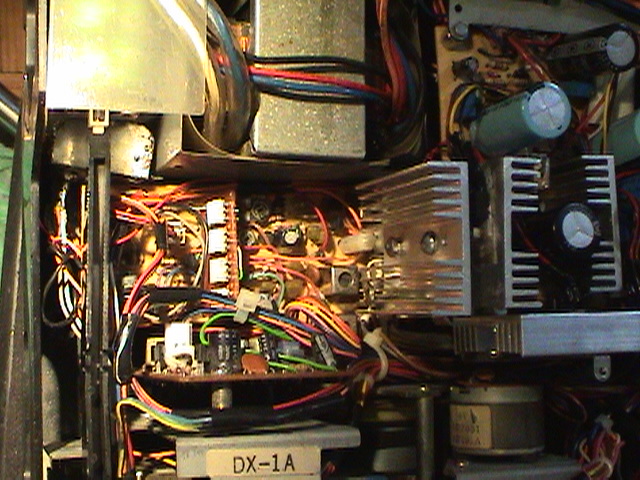Project "Phoenix"
HITACHI CASSETTE DECK D-2200M
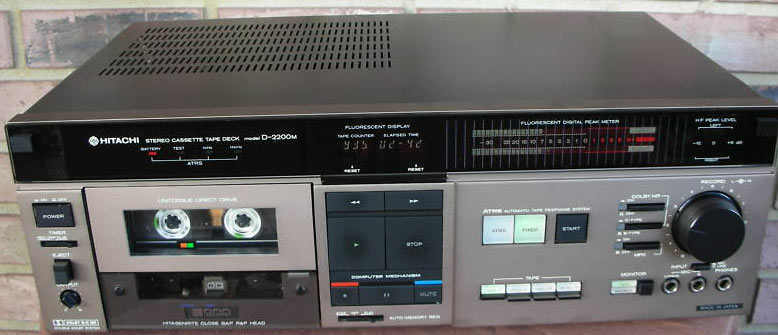
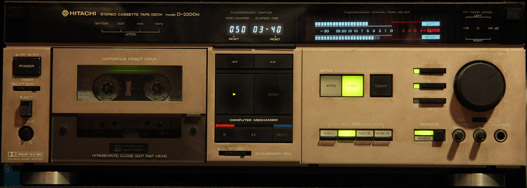
In early 90-ties the Cassette Tape was still very popular media to for home recording and every audiophile wanted to have good 3 head cassette deck.
One day in 1992 a friend of my brought to me broken big Cassette Deck and asked me "why this Radio does not play". He found it in the garbage of one Manhattan's building, where he was a Super that time. I explained to him that is not a "Radio", it is Cassette Deck and if that is not broken, he would need the Amplifier and Speakers or Headphones to hear any sound out of it. First look gave me answer, why this expensive deck end up in the garbage. The left Capstan bearing was crushed. Big, big mechanical problem. The tape transport did not work at all. The Hitachi deck was left for me for parts.
The second look at that deck change my mind to junk this recorder. It was very expensive Top of the Line model "worth to fight" to recover it.
Hitachi D-2200M Double Capstan, 3 heads, Dolby B, C noise reduction system with computer control tape calibration. The best of this, special Hitasenrite glass-ferrite ultra hard heads, lasting forever even on Metal Tape.
I was able to fix and align broken Capstan Bearing. I replaced all belts and restored this Cassette Deck to former glory. But wasn't given to me to enjoy of that Deck so long.
"Ghost in the Machine"
One night, when I was playing tape on D-2200M, the Con Ed started playing with power line in my area. They send some spikes on power line, blowing up most vital component in my Hitachi deck, the Microprocessor.
Now that could be over for this deck. I could not find any replacement Chip for this model. It was already to old (made in 1982) in mid 90-ties. My PIC microprocessor programming skills were none.
After I got schematics of this deck, I decided to build my own "microprocessor". The hybrid circuit containing TTL logic chips performing same logic function on input/output pins like original microprocessor.
 |
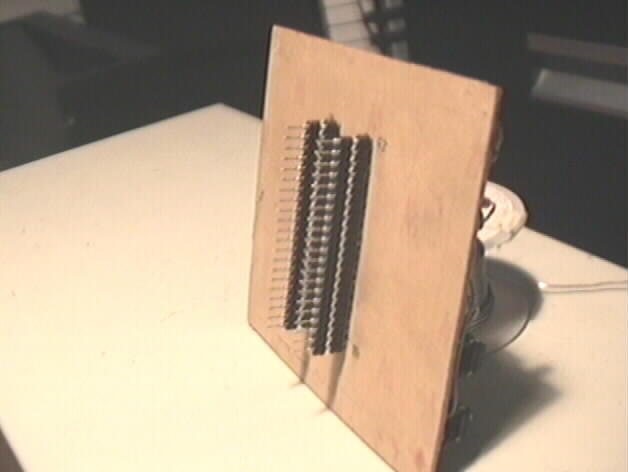 |
TTL Logic circuit board microprocessor replacement |
Bottom view of Logic Control board with pins going to the IC socket replacing microprocessor |
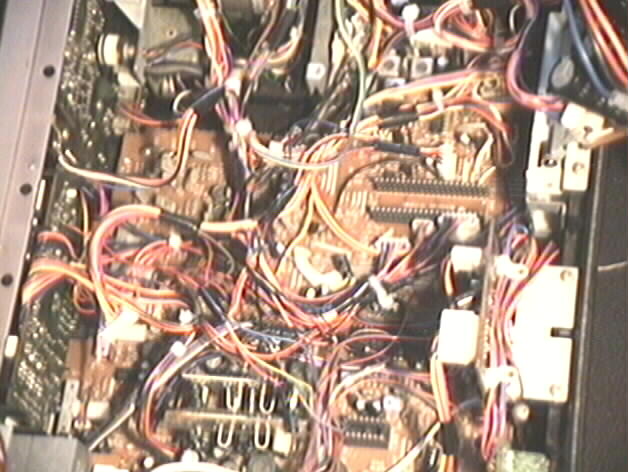 |
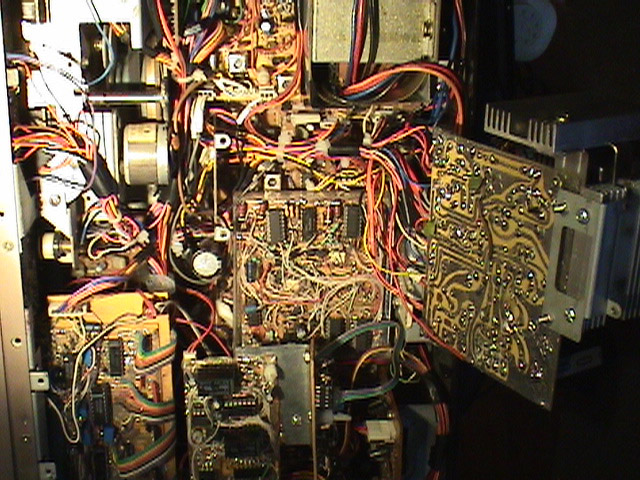 |
Main Board with visible IC Microprocessor Socket |
TTL Hybrid Processor installed in Main Boar Socket |
My Hybrid Processor can perform basic operation functions like START, STOP, REV, FF, PAUSE, RECORD, RECORD MUTE, but I wasn't able to make sophisticated Tape Calibrations function with this simple TTL logic chips. I decided to convert it to manual calibration. This requires external potentiometer to calibrate BIAS by hand to achieve best recording on specific tape. Some major changes had to be made in recording circuit, so I decided to improve that design implementing Dolby HX PRO circuit into it.

HX PRO circuit based on uPC1297 Chip
The HX PRO allows to improve recording of high frequencies on tape getting less distortions and better signal to noise ratio.
HX PRO Board with new BIAS generator
To be able to control BIAS and recording level we have to provide some knobs on front panel without destroying good appearance. I used Output headphone level Pot for BIAS adjustment and had to provide 2 additional knobs for individual Left and Right channels tape preset recording level adjustment. Those level pots were installed inside MICROPHONE Jacks which I never use.
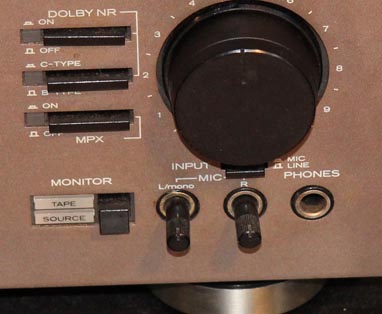 |
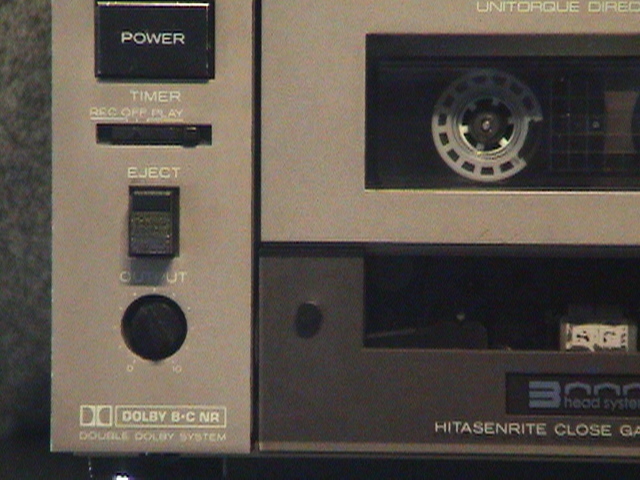 |
REC level preset adjustment knobs |
BIAS Adjustment Knob (Former Output Level) |
And that would be happy ending,
but ghost was still in the machine...
|
TOP | NEXT >> |
|---|
